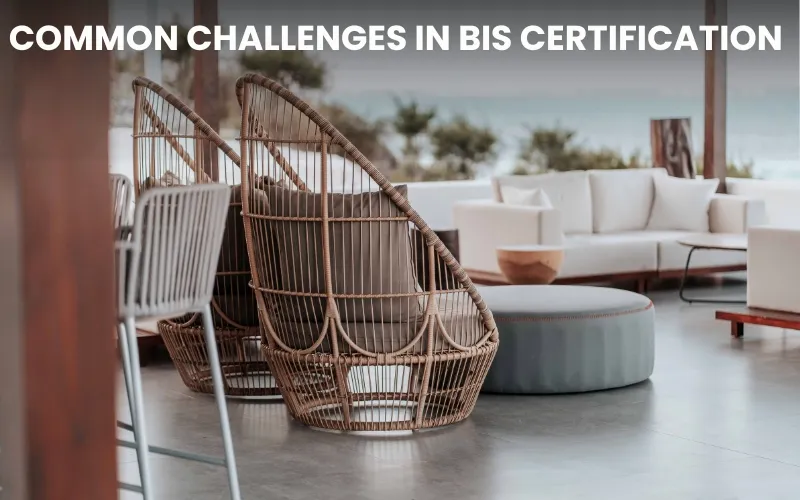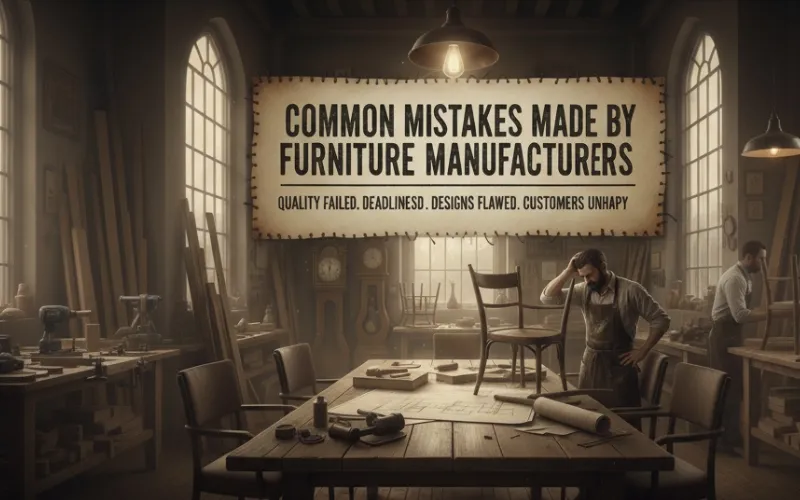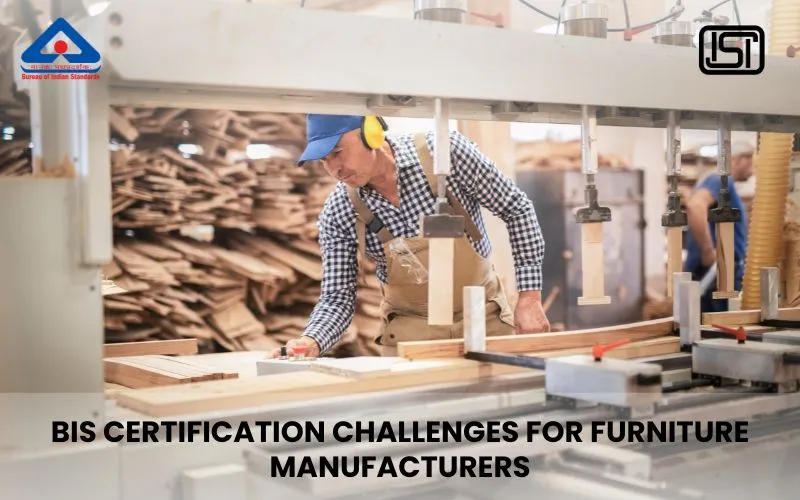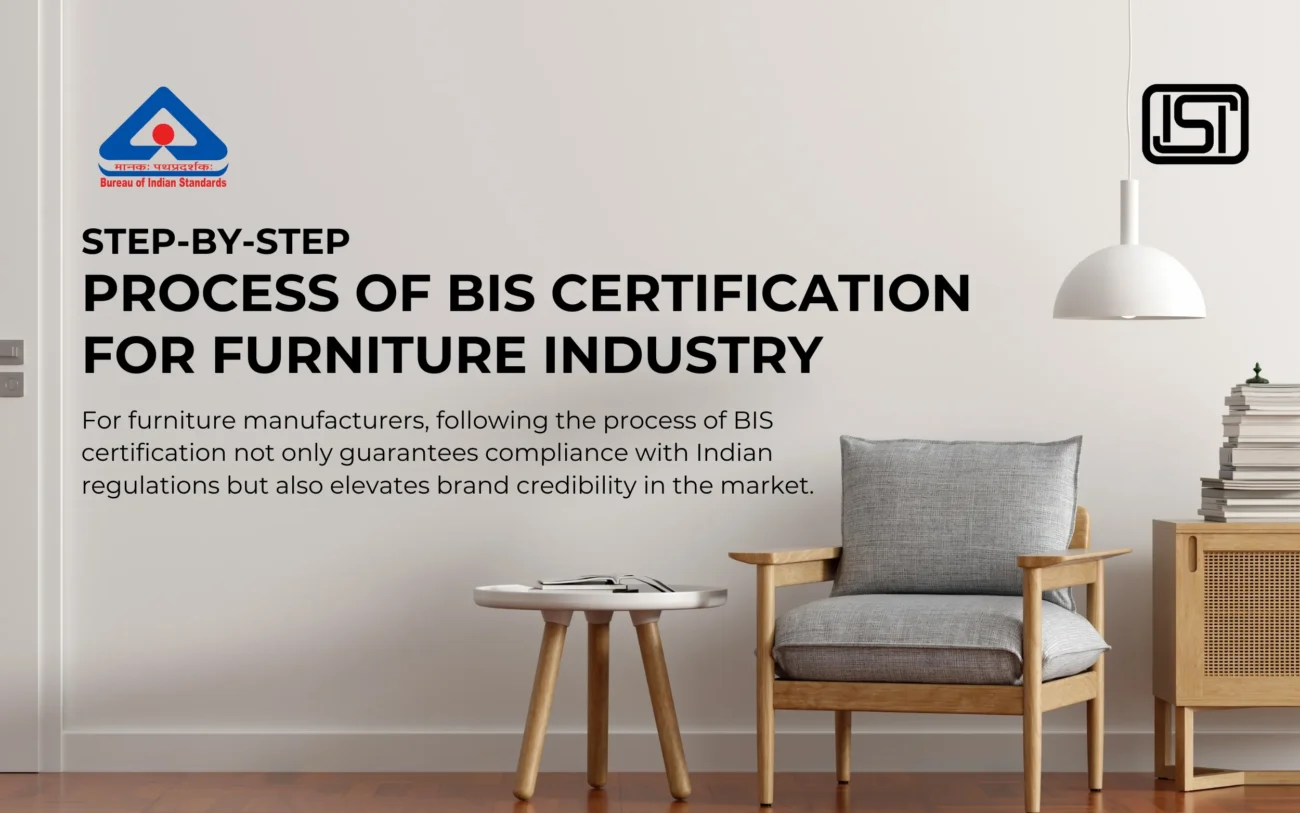BIS Certification for Furniture ensures that every product meets high standards of quality, safety, and regulatory compliance. However, many furniture manufacturers face BIS Certification Challenges during the process, making it difficult to achieve compliance efficiently. For manufacturers, especially small and medium enterprises (SMEs), these challenges range from understanding complex regulatory standards to managing documentation, testing, and costs.
Obtaining BIS certification is more than a legal requirement; it demonstrates credibility, reliability, and professionalism to customers, suppliers, and business partners. Despite the hurdles, overcoming BIS Certification Challenges is crucial, as certified furniture guarantees product safety, durability, and market credibility. Moreover, it opens doors to government tenders, export opportunities, and higher customer trust. By proactively addressing these challenges, furniture manufacturers can ensure a smoother certification process and gain a competitive edge.

Common Challenges in BIS Certification
Documentation and Paperwork Issues
One of the biggest hurdles in BIS certification is handling extensive documentation. SMEs often struggle with missing forms, incomplete details, or incorrectly filled applications, causing delays or rejections.
Essential documents include:
- Company registration certificates
- Production process details
- Quality control system documents
- Previous compliance or test reports
Many smaller manufacturers lack dedicated staff to handle these tasks, which leads to BIS documentation issues for furniture manufacturers. Maintaining structured records and checking all forms before submission can significantly reduce errors and speed up approvals.
Understanding BIS Standards and Compliance
BIS sets technical standards for furniture covering materials, safety, durability, and ergonomics. Keeping up with these standards, especially when they are updated frequently, can be challenging.
Misinterpretation of standards may result in BIS compliance problems, such as delayed approvals or non-certification. Manufacturers need to focus on:
- Load-bearing capacity
- Fire resistance
- Material composition
- Ergonomic design
Regular training for staff, consulting experts, and conducting internal audits ensures products consistently meet BIS norms. This reduces errors and strengthens overall product quality.
Cost and Financial Barriers
Financial investment is another major challenge. Certification involves multiple costs:
- Application fees to BIS
- Testing costs in accredited labs
- Certification charges, which may be annual
For SMEs, these costs can strain resources, especially when combined with day-to-day operational expenses. BIS certification costs for furniture can sometimes discourage manufacturers from pursuing compliance.
Tips to manage costs:
- Budget for certification separately
- Seek government subsidies or support programs
- Consider phased certification for different product lines
With proper planning, financial barriers can be overcome without affecting business growth.
Testing and Quality Verification Challenges
Testing furniture to meet BIS standards involves evaluating:
- Durability and load capacity
- Fire safety
- Ergonomic and design parameters
Access to BIS-approved labs is limited in some regions. Multiple rounds of testing due to errors or updated standards increase costs and timelines, creating BIS testing challenges for furniture products.
Manufacturers can streamline testing by:
- Preparing samples carefully
- Choosing certified labs
- Maintaining a checklist of all test requirements
This proactive approach reduces repeated tests and speeds up approvals.
Time-Consuming Process
BIS certification is often lengthy and time-intensive. Delays in document verification, lab backlogs, and repeated corrections can extend the approval process.
For SMEs, time constraints affect:
- Production schedules
- Market launches
- Cash flow management
Understanding each step, maintaining organized records, and proactive communication with BIS officials can make the BIS certification process for furniture manufacturers more manageable.
Challenges Specific to SMEs
SMEs face unique hurdles such as:
- Limited financial resources
- Lack of technical expertise
- Inability to hire specialized consultants
These factors contribute to BIS approval difficulties for furniture SMEs. However, leveraging government programs, affordable consulting, and step-by-step planning can help SMEs successfully navigate certification.

Common Mistakes Made by Furniture Manufacturers
Even experienced manufacturers make errors that delay certification. Common mistakes include:
- Incomplete Documentation: Missing production records or test certificates
- Misunderstanding Compliance Requirements: Not meeting technical standards
- Failing Initial Testing / Lab Errors: Incorrect samples or wrong lab selection
- Ignoring Updates in BIS Standards: Using Outdated Specifications
Awareness of these pitfalls allows manufacturers to avoid common mistakes in BIS certification for furniture, saving time and costs.
How to Overcome BIS Certification Challenges
- Proper Documentation & Record Keeping – Maintain organized files for all certifications, production details, and quality records.
- Hiring Experienced Consultants – Professionals guide manufacturers through the process, reducing errors and delays.
- Understanding Testing Requirements in Advance – Accurate sample preparation and lab planning prevent repeated tests.
- Budget Planning for Certification Costs – Allocate funds for fees, tests, and certification charges to avoid financial strain.
- Keeping Up-to-Date with BIS Standard Changes – Regular review of updates ensures compliance and avoids rejections.
Implementing these strategies helps manufacturers navigate BIS certification smoothly, ensuring efficiency and long-term benefits.
FAQs
1. Why do small furniture manufacturers face challenges in BIS certification?
Limited resources, lack of technical expertise, and insufficient staff make the process difficult for SMEs.
2. What is the duration of the BIS certification process?
It can range from several weeks to a few months, depending on documentation, lab availability, and manufacturer readiness.
3. Can manufacturers apply without a consultant?
Yes, but the risk of delays and errors is higher. Consultants improve efficiency and success rates.
4. What are common mistakes to avoid?
Incomplete documentation, misunderstanding compliance requirements, failing initial tests, and ignoring BIS updates.
BIS certification is vital for quality, safety, and compliance in the furniture industry. SMEs often encounter challenges like documentation errors, financial barriers, testing hurdles, and delays.
By adopting strategies such as proper documentation, understanding testing requirements, budgeting wisely, hiring experienced consultants, and staying updated with BIS standards, manufacturers can overcome obstacles and achieve certification efficiently.
By understanding and overcoming BIS certification challenges, furniture manufacturers can improve product quality, gain customer trust, and expand market opportunities. Take informed steps today to navigate the BIS certification process and strengthen your furniture business.




